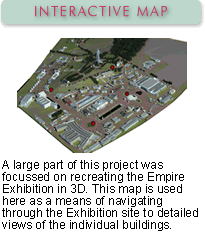The conception and construction of the1938 Empire Exhibition was a remarkable statement of vision, resourcefulness and capability brought about by a number of influential Scottish individuals with the support of the British Government. Glasgow was Scotland’s largest city, the second largest city in the UK, an important cultural centre and a major centre for learning. It was also home to a vast industrial empire. Its output of manufactured goods included ships, marine engines, locomotives, structural steel work, engineered products of many kinds, carpets, print and foodstuffs. Much of this output and been distributed across the Empire and for that reason, Glasgow was known as the ‘Workshop of the Empire’ or ‘Second City of Empire’. As if to underline this, the largest ship in the world, the Cunarder Queen Elizabeth, was launched at the height of the Exhibition from John Brown’s Clydebank shipyard on 27 September 1938.
In keeping with its status, Glasgow had a tradition of holding major events such as the Exhibitions of 1888, and 1901. However, its industrial fortunes had been in decline since the First World War hastened by the depressed years of the 1920s and early 1930s. Concern that Glasgow’s industrial base might fail, rooted in the declining heavy industries, provided part of the impetus behind the Empire Exhibition in which Glasgow’s industries, old and new, would be showcased to the world.
By 1938 however, British rearmament was well underway in response to threatening political events worldwide. This meant that the traditional heavy industries, including those in Glasgow, had been re-energised in the wholesale production of armaments. In 1938, largely because of this, Glasgow was a city on the move once again with reducing unemployment and rising living standards.
The 1938 Empire Exhibition was the only the second one so named to have been held in Britain the other being at Wembley in 1924. |





